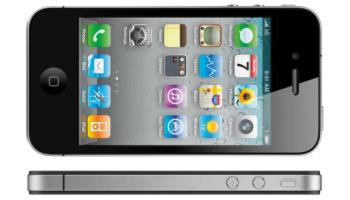iPhone 4 Could Revolutionise Video Calls Say Analysts

Analysts’ reviews have generally been strong for the iPhone 4 praising features such as the FaceTime video calling app
Apple’s debut of the iPhone 4 during the company’s 2010 Worldwide Developers Conference (WWDC) June 7 was somewhat anticipated, thanks to the leaks of two prototype devices in the months leading up to the announcement. However, the next-generation smartphone’s design and array of features managed to reasonably impress many of the analysts covering the event.
“While the iPhone 4 isn’t the leap forward that Apple paints it as, it is an exceptionally beautiful device and is a substantial upgrade that will succeed in maintaining Apple’s mind and market share growth,” Charles Golvin, an analyst with Forrester, wrote in a 7 June research note. “Apple’s carrier partners will benefit more in renewed loyalty as existing customers upgrade than in new customer acquisitions, though we expect AT&T’s new introductory pricing tier will lure in family plan additions as well.”
Realise Video Telephony Vision
One feature in particular, Golvin added, had mass-market appeal: FaceTime, which allows users to make video calls via WiFi. Apple CEO Steve Jobs suggested that Apple is in talks with carriers about offering a 3G-enabled version of the feature. “With its FaceTime video calling app, the company demonstrated what it does best: make technology usable by mainstream consumers,” he wrote. “If Apple succeeds in convincing the industry to adopt FaceTime as a standard, the New York World’s Fair of 1964 will finally realise one of its visions: video telephony.”
Other analysts seemed to agree about the potential of FaceTime. “The gee-whiz feature of iPhone 4 is FaceTime (video chat), adding yet another feature which historically was tied to a personal computer,” Gene Munster, an analyst with Piper Jaffray, wrote in a 7 June research note reprinted on blogs such as Apple Insider. “[The] iPhone 4 also adds an HD video camera, iMovie for the iPhone and the ability to run multiple apps at the same time, collectively creating an integrated experience that used to require multiple devices. The bottom line is the iPhone taking unit and dollar share from other device categories.”
Other analysts were not quite as struck by the device overall. “We see the iPhone 4 announcement meeting expectations and the lack of other announcements slightly disappointing,” wrote analysts from Macquarie, according to The Wall Street Journal.
iPhone Meets Expectations
Details-wise, the iPhone 4 closely matched the prototype Apple device broken down by tech blog Gizmodo in April, including the presence of a front-facing camera for video conferencing and a larger battery. That device had been lost by an Apple engineer visiting a German beer garden in northern California, before being retrieved by a third party and sold to the blog’s parent company.
The iPhone 4 also includes a proprietary A4 processor under the hood, and a 5-megapixel camera paired with a rear illuminated sensor. During his keynote presentation, Jobs termed the new smartphone “the biggest leap since the original iPhone,” according to a live transcript of the event, adding: “This is beyond doubt one of the most precise, beautiful things we’ve ever done.” The smartphone’s operating system, previously announced as “iPhone OS 4” but changed to “iOS4,” features 1,500 new APIs and user features such as multitasking and “iAd,” the latter a platform for delivering mobile advertisements within third-party apps.
The larger battery supposedly provides 7 hours of talk time, 300 hours of standby, 40 hours of music, 10 hours of video, 6 hours of Web browsing with a 3G connection and 10 hours of browsing with WiFi. It also includes a built-in three-axis gyroscope, for refined location data and potential use in apps.
The iPhone 4 will be available in either white or black, starting on 24 June. The 16GB version will retail for $199, and the 32GB version for $299, with a two-year contract through AT&T.